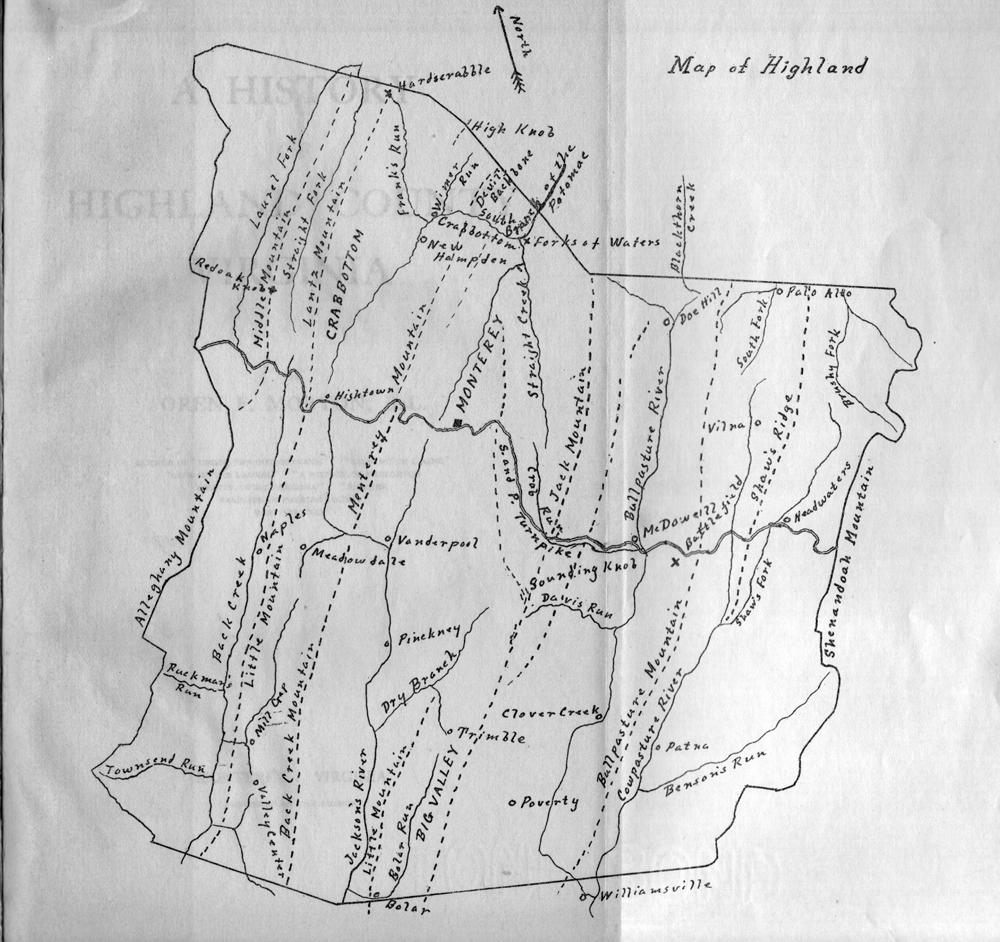|
Moderated by NW Okie! |
Volume 18 , Issue 282016Weekly eZine: (371 subscribers)Subscribe | Unsubscribe Using Desktop... |
Early Bullpasture Pioneers (Virginia)

In the settlement of the Valley of Virginia it was not the usual practice for a pioneer to isolate himself. There were few Indians seen in this valley of Virginia, and these were nominally at peace with the whites. It was known that a hostile relation would arise at any moment. For mutual aid and protection, a group of settlers would come into a valley together.
It was in the early days of April, 1746, when all Augusta had no other name than "Beverly's Mill Place," the county surveyor laid off several tracts within the Highland area. He came again at the close of July and still again in September. Altogether he laid off 21 tracts on the Bullpasture and Cowpasture, almost wholly on the former.
Some of the settlers in the Bullpasture and Cowpasture were Alexander Black, John and Robert Carlile, Wallace Ashton, Loftus Pullin, Richard Bodkin, James Miller, Matthew Harper, William Warwick, James Largent, William Holman, John McCreary, Samuel Delamvntony, Archibald Elliott, and Robert Armstrong.
Black was just above the mouth of the Bullpasture, where Major J. H. Byrd lived. All the others, with perhaps one exception, were on the Bullpasture itself, and nearly or quite in the order they are named as one ascends the river.
We know that our Warwick was at the mouth of Davis Run. Warwick, also, may really have been one of the settlers of that name in Bath. Warwick was a enterprising pioneer, who was not slow to seize an additional choice tract, even if it laid at some distance from his home.
The Carliles held two tracts near by on the run named for them. One of these tracts cornered on McCreary. The Carliles lived and died on their homestead, which remained in the family many years later.
This is an interesting story that the wife, Ann Jane Usher, of one pioneer named Pullin. Ann Usher uncovered a romance of one Edward Usher, who had eloped with the daughter of an English nobleman named Perry and came to America. Their four children were daughters, one dying in infancy. Usher died while they were yet small, and the widow went to England, hoping for a reconciliation with her father. He recognized her on the road as he drove by in his carriage, but being still angry he tossed her a shilling, telling her that was all she would have from him and that she must mind her brats herself. She returned to America, her children, and also herself, finding their way to the Augusta colony, probably to Fort Dickenson. James Knox became the guardian of Ann Jane, and with a portion, at least, of her inheritance he purchased for her a negro girl. Several years later she married Loftus Pullin. One sister married William Steuart, another Highland pioneer, and the third (Martha) married a son of Captain Adam Dickenson. The stern parent finally relented and provided for his daughter by will. But the search he instituted failed to discover her, and no knowledge thereof coming to her descendants for many years, the matter went by default.
| View or Add Comments (0 Comments)
| Receive
updates ( subscribers) |
Unsubscribe
| © . Linda Mcgill Wagner - began © 1999 Contact Me | |
